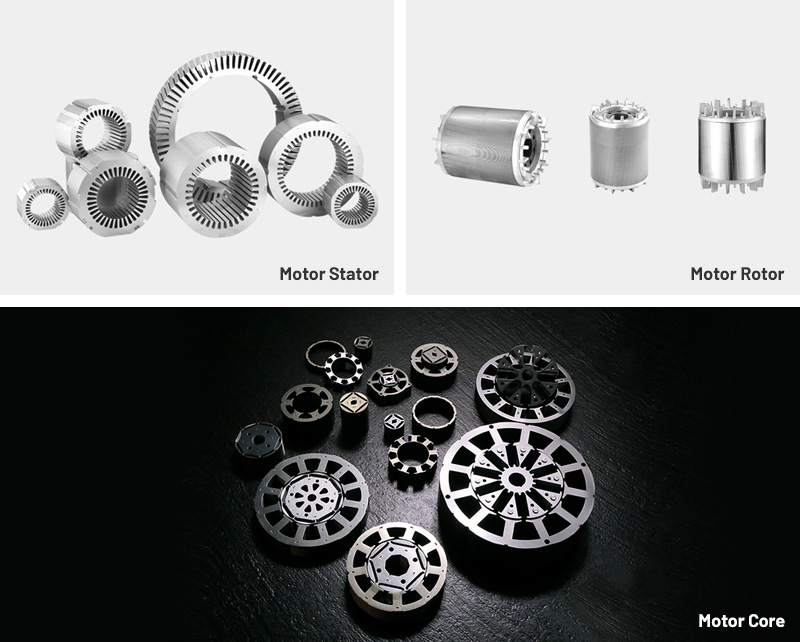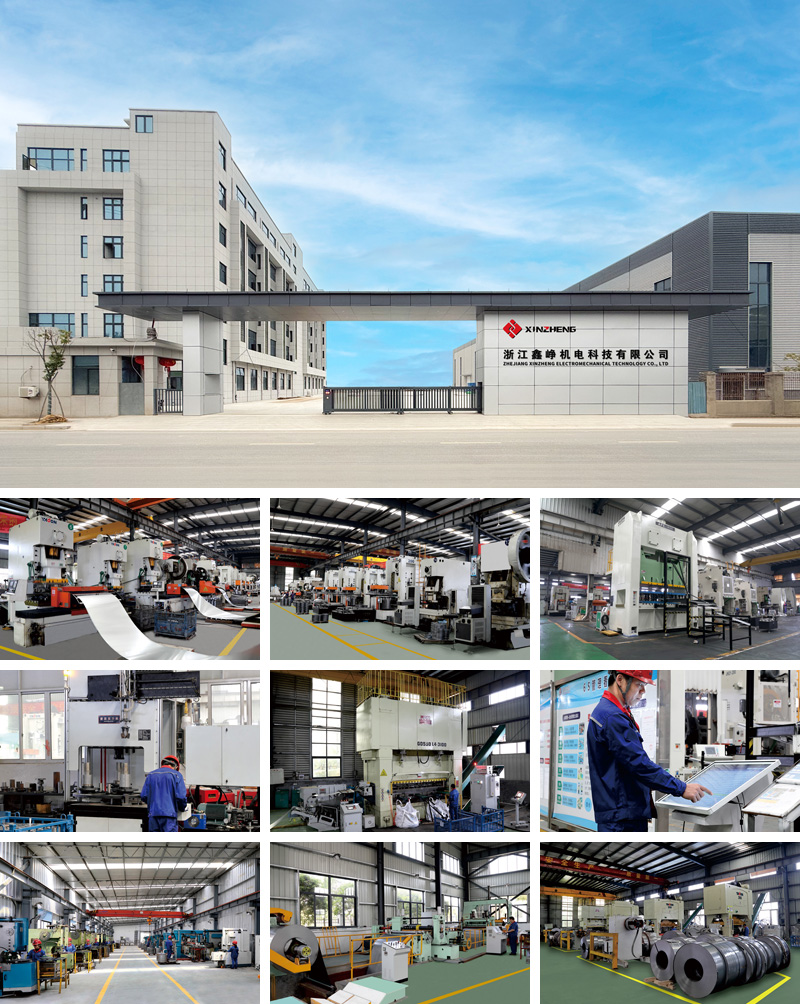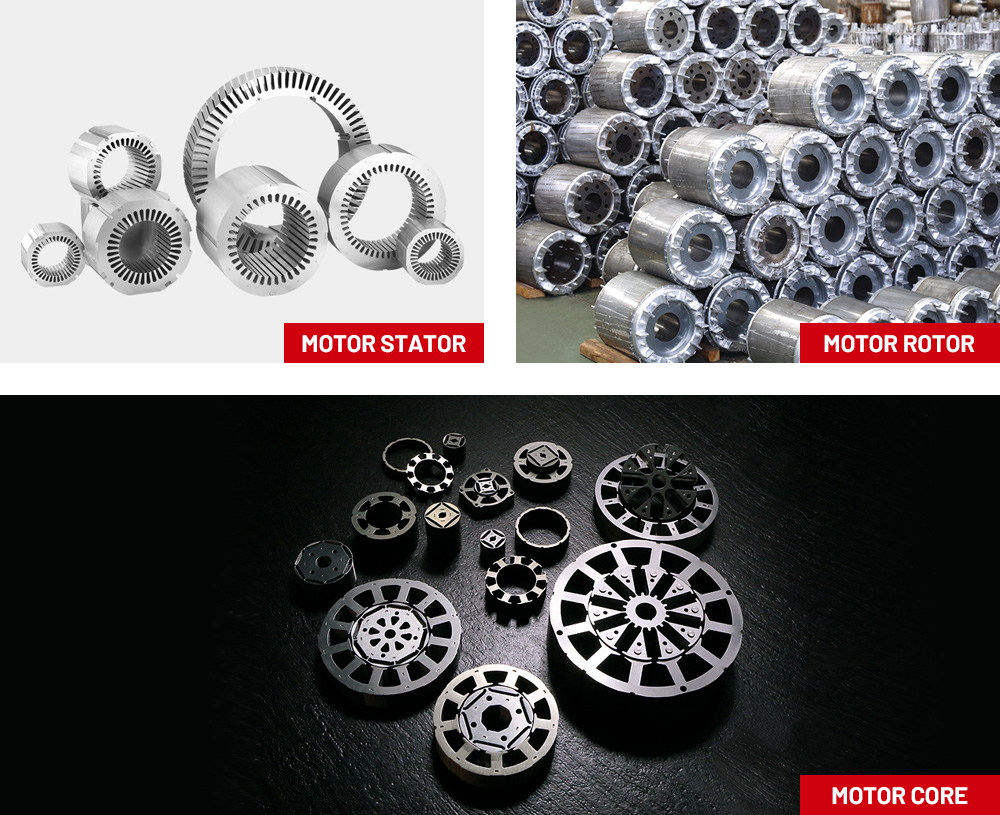The accelerating shift toward electrification, high‑power density motors, and harsher operating environments has created a growing demand for motor cores that can withstand elevated temperatures while maintaining performance. Industries such as automotive (especially electric and hybrid vehicles), industrial machinery, energy generation, oil & gas, and heavy‑duty HVAC systems increasingly deploy motors that run under high load, high ambient temperature, or frequent start/stop and variable‑frequency conditions. Under these circumstances, typical motor cores may suffer from insulation degradation, increased core losses, or structural instability.
Therefore, High temperature resistant motor laminations become vital. They address the need for magnetic cores that retain low-loss performance, structural integrity, and longevity in motors subject to high thermal stress or continuous operation. As energy efficiency standards tighten and reliability demands increase, especially in mission‑critical or heavy‑duty applications, the supply chain and OEMs are turning toward lamination materials and processes optimized for thermal stability and long-term durability.
At the heart of every AC or inverter-driven motor is the magnetic core — a stack of thin steel sheets (laminations), insulated from one another, forming the stator and sometimes rotor. In alternating magnetic fields, induced eddy currents circulate within conductive materials; if the core were a solid block, these currents would produce substantial heating and energy loss. Laminations interrupt the paths for eddy currents, thus minimizing those losses.
However, under elevated temperatures or frequent thermal cycling, standard lamination steels and their insulation coatings may degrade. For example, insulation may crack, coatings may lose adhesion, or magnetic properties can shift — all leading to increased losses or failure. This makes high‑temperature tolerant lamination design essential for motors operating in harsh conditions.
Hence, “high temperature resistant” motor laminations combine two technical strategies:
Use of steel alloys and insulation/coating systems designed for thermal stability — maintaining resistivity, permeability, and insulation integrity at elevated temperatures.
Manufacturing and heat‑treatment processes (such as annealing and coating curing) robust enough to ensure the material’s magnetic performance, mechanical strength, and electrical isolation even after thermal stress.
Typically, laminations are made from electrical steel (silicon steel), which offers high magnetic permeability, acceptable saturation flux density, and increased electrical resistivity due to silicon addition. The silicon content helps reduce eddy current losses.
For high‑temperature resistance, additional considerations are introduced:
Alloy composition: The steel must maintain magnetic and resistive properties under heat; some applications may also explore higher-grade soft magnetic alloys (e.g., nickel‑iron or iron‑cobalt variants) if higher saturation flux or thermal stability is needed.
Insulation coating: Each lamination is applied with a thin insulating layer (varnish, inorganic coating, or hybrid) to electrically isolate layers and prevent inter-lamination currents. For high-temperature applications, the coating must be rated for higher thermal classes and exhibit stable adhesion, resist cracking, peel-off, or degradation over repeated thermal cycles.
Stack construction: Laminations are stamped or cut (via dies, laser, or EDM), then stacked precisely to form the stator or rotor core. Precision in cutting and stacking ensures alignment, consistent air gap, and uniform magnetic flux distribution.
The manufacturing process generally includes:
Cold rolling of silicon‑steel coils to required gauge.
Insulation coating (varnish or inorganic) to isolate individual sheets.
Cutting/stamping the laminations via progressive dies or laser/EDM for complex shapes.
Stress‑relief annealing after cutting to recover magnetic properties and relieve internal stresses. Heat treatment helps restore the grain structure, optimizing permeability and reducing hysteresis losses.
Stacking and assembling the lamination pack with tight dimensional and angular tolerances to form stator or rotor cores. Proper stacking and clamping mitigate vibration, maintain uniform magnetic fields, and ensure structural integrity under thermal and mechanical stress.
When correctly executed, the result is a core that delivers stable magnetic performance, reduced hysteresis and eddy-current losses, and thermal resilience — even when the motor is subjected to high operational temperature or frequent cycles.
The reliability and efficiency of high‑temperature resistant laminations depend on several critical factors:
Material purity and alloy composition: Silicon content must be optimized (commonly around 3.0–3.2%) to balance resistivity, magnetic permeability, and formability. Excessive silicon may raise resistivity but reduce ductility, complicating stamping.
Insulation coating quality: The coating must offer stable, high surface resistivity and maintain adhesion under thermal cycling. Any cracks, peeling, or coating defects can create inter-lamination conduction, leading to localized heating and loss of efficiency.
Manufacturing precision: Variations in sheet thickness, stamping burrs, misaligned stacking, or uneven clamping can create flux leakage, hot spots, vibration, or increased noise — particularly problematic under repeated thermal load.
Thermal treatment and stress relief: Proper annealing and post-stamping heat treatment ensure grain structure stabilizes, minimizing core losses (especially hysteresis) and preserving magnetic properties at elevated temperatures.
Coating class and thermal rating: For high-temperature environments, the insulation system (both lamination coating and internal winding insulation) must match the expected maximum service temperature and thermal cycles. This includes selecting resins or inorganic coatings that resist degradation over time.
Neglecting any of these aspects may erode the advantages of high-temperature resistant laminations, leading to elevated losses, reduced lifespan, and motor failure — especially under harsh conditions.
For OEMs or system integrators sourcing high‑temperature motor laminations, supplier selection is a critical step. The following criteria help assess whether a supplier can meet the demanding requirements:
Material certification and traceability: Suppliers should provide detailed material specifications — steel grade, silicon content, measured magnetic parameters (permeability, saturation flux, core-loss at reference flux density/frequency), and heat-treatment history.
Thermal‑grade insulation and coating specification: Transparency on coating type, thermal class, and durability under cycling. Suppliers should offer data or test results on insulation resistance before and after thermal aging.
Manufacturing capability & precision: Facilities should support high-precision stamping or cutting (laser/EDM), tight dimensional tolerances, burr-free edges, and accurate stacking — vital for high-performance motor cores.
Quality control and inspection procedures: Evidence of coating integrity inspection, dimensional control, stacking check, and perhaps sample testing of core loss at elevated temperatures or thermal cycling conditions.
Batch consistency and volume capacity: For large‑scale production (e.g., EV motors, industrial drives), suppliers must demonstrate capability for consistent production over many batches without variation in material or process quality.
Compliance and documentation: For industrial or regulated applications, the supplier should provide compliance with relevant standards, documentation of test results, and guidance on handling, storage, and motor core integration.
By applying these criteria, procurement engineers can mitigate risk, ensure long-term reliability, and secure performance consistency across motor production.
Although high-temperature resistant laminations offer clear benefits, the industry still faces several challenges:
Cost and complexity: Using higher-grade alloys, thermal‑class coatings, and rigorous processing increases material and manufacturing costs compared to standard laminations. This can hamper price-sensitive markets.
Manufacturing difficulty: Thin laminations and heat‑resistant coatings often require more precise stamping, cutting, and handling. Thinner alloys or coated steel may be harder to punch, causing increased wear on tooling and higher scrap rates.
Quality assurance burden: Verifying long-term thermal performance demands additional testing — e.g., thermal cycling, insulation resistance checks, magnetic property retention — which adds to lead time and cost.
Balancing mechanical strength, magnetic performance, and thermal resilience: Trade‑offs often emerge: a material with excellent thermal tolerance and resistivity might be harder to stamp or may have lower saturation flux density or permeability. Designers must carefully balance these parameters according to application requirements.
Supply-chain variability: Availability of specialized high-temperature steels or coatings can be limited. Varied batches, inconsistent coatings, or irregular heat-treatment processes can lead to variability in performance for end‑users.
These pain points emphasize the importance of careful supplier selection, robust quality control, and design trade‑off analysis, especially for motors expected to run under high thermal stress or in demanding environments.
High-temperature resistant motor laminations are most valuable where motors are exposed to high ambient temperature, continuous heavy load, frequent start/stop cycles, or elevated internal heating. Some representative applications:
Heavy-duty EV traction motors and industrial drives: In electric vehicles, especially in commercial, heavy-duty, or performance segments (e.g., trucks, buses, industrial vehicles), motors often face high load and thermal stress. Laminations tolerant to thermal cycles help maintain core integrity and efficiency.
Industrial compressors, pumps, and blowers in high-temperature environments: In oil & gas, mining, or petrochemical industries, motors driving pumps or compressors operate under high ambient temperatures or generate significant internal heating. Thermal‑resistant cores improve reliability and reduce downtime risk.
HVAC systems in harsh climates: Large HVAC compressors, fans, or air-handling units operating in hot climates or continuous cycles benefit from laminations that resist insulation breakdown and maintain magnetic properties over long service periods.
High-speed or variable-frequency motors: Motors driven by variable-frequency drives (VFDs) or running at high RPM generate more heat due to switching losses. Thermal‑robust laminations help contain core losses and prevent degradation.
Renewable energy equipment and power generation: Generators or motors in renewable energy systems (wind turbines, pumps for solar thermal plants, etc.) may undergo frequent load changes and thermal swings; high‑temperature laminations extend lifespan and efficiency.
These scenarios demonstrate how specialized laminations address real-world challenges where standard lamination would likely degrade or fail.
The rising demand for durable, efficient, and compact motors under high thermal stress is driving innovation in lamination materials, coatings, and manufacturing processes. Notable trends include:
Exploration of advanced alloys: Beyond silicon steel, higher-performance soft magnetic alloys, such as nickel‑iron or iron‑cobalt steels, are being considered for applications requiring higher saturation flux density, thermal stability, or lower core losses under high-frequency or high-load conditions.
Improved high-temperature insulation coatings: Development of advanced inorganic or hybrid coatings that maintain insulation, adhesion, and resist thermal degradation over extended cycles. Such coatings improve reliability for motors in harsh or high‑duty environments.
Enhanced manufacturing precision and laser/EDM cutting: To support complex lamination geometries, tight tolerances, and heat-resistant alloys, manufacturing is shifting toward precise cutting technologies and automated stacking systems, reducing burrs, improving alignment, and ensuring consistent performance.
Integration with thermal management systems: As motors become more compact and power-dense, designers increasingly combine robust laminations with active cooling (air or liquid), enhanced ventilation, or optimized thermal pathways — ensuring that both magnetic and thermal performance remain within safe limits.
Standardization and supplier footprint expansion: Given growing global demand (EVs, industrial electrification, renewable energy), suppliers capable of producing high-temperature laminations at scale — with certified material and quality traceability — are becoming strategic partners for OEMs.
Together, these trends point toward a future where high-temperature resistant motor laminations are standard components in demanding applications, providing a combination of efficiency, durability, and performance.
Q: What distinguishes “high temperature resistant” laminations from standard ones?
A: The difference lies in the choice of steel alloy, insulation coating, and thermal‑cycle capable processing. High‑temperature laminations use steel grades and insulation systems designed to retain magnetic and electrical properties under elevated temperatures, whereas standard laminations may degrade under similar thermal stress.
Q: Can thin standard silicon steel laminations suffice for high-temperature motors if thickness is optimized?
A: While thin standard laminations help minimize eddy current losses, they may not maintain insulation integrity or magnetic properties under sustained high thermal stress. The coating, grain structure, and heat-treatment processes must be suitable for thermal cycling — aspects that standard laminations might not address.
Q: Does using high-temperature laminations significantly raise the cost?
A: Typically yes. Higher-grade alloys, specialized coatings, precise cutting, and energetic annealing or stress‑relief heat treatments add material and process cost. However, for applications where reliability and lifespan matter (e.g., industrial, automotive, heavy-duty), the total cost of ownership often justifies the investment.
Q: What should a buyer request from a supplier to verify lamination suitability for high-temperature use?
A: Key items include material certificates (steel grade, alloy composition), insulation coating specification and thermal class, results from core-loss testing (before/after thermal cycling), dimensional tolerance records, and documentation of the manufacturing process (cutting, stamping, annealing, stacking).
As electrification extends into more demanding sectors — heavy‑duty vehicles, industrial systems, high-load pumps, compressors, renewable energy, and climate-challenged HVAC — the requirement for reliable, efficient, and thermally resilient motor cores becomes critical. High temperature resistant motor laminations address this need by combining advanced material science, precise manufacturing, and robust insulation/coating systems to deliver low-loss, stable performance under thermal stress.
Challenges remain — in cost, manufacturing complexity, quality assurance, and supply-chain consistency — but ongoing innovations in alloys, coatings, cutting/stacking technologies, and thermal management are steadily overcoming these barriers.
Product Category

Comprehensive Strength



Copyright © Zhejiang Xinzheng Electromechanical Technology Co., Ltd. All Rights Reserved.
This website uses cookies to ensure you get the best experience on our website.